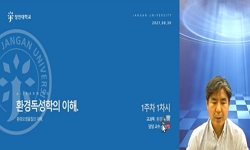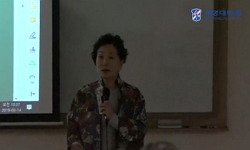This study is the first to report the toxicity of pesticides to mycophagous ladybird, Illeis koebelei, which feeds on powdery mildew fungi. We investigated the selective toxicities of synthetic or environmentfriendly biopesticides to I. koebelei for i...
http://chineseinput.net/에서 pinyin(병음)방식으로 중국어를 변환할 수 있습니다.
변환된 중국어를 복사하여 사용하시면 됩니다.
- 中文 을 입력하시려면 zhongwen을 입력하시고 space를누르시면됩니다.
- 北京 을 입력하시려면 beijing을 입력하시고 space를 누르시면 됩니다.

Toxicity of Pesticides to Mycophagous Ladybrid, Illeis koebelei Timberlake (Coleoptera: Coccinellidae: Halyziini)
한글로보기https://www.riss.kr/link?id=A104383829
- 저자
- 발행기관
- 학술지명
- 권호사항
-
발행연도
2017
-
작성언어
English
-
주제어
Ladybeetle ; Illeis koebelei ; Mycophagous ; Pesticide ; Toxicity ; 무당벌레 ; 식균성 ; 농자재 ; 독성
-
KDC
523
-
등재정보
KCI등재
-
자료형태
학술저널
- 발행기관 URL
-
수록면
364-372(9쪽)
-
KCI 피인용횟수
0
- 제공처
-
0
상세조회 -
0
다운로드
부가정보
다국어 초록 (Multilingual Abstract)
This study is the first to report the toxicity of pesticides to mycophagous ladybird, Illeis koebelei, which feeds on powdery mildew fungi. We investigated the selective toxicities of synthetic or environmentfriendly biopesticides to I. koebelei for integrated powdery mildew management programs. Three synthetic insecticides, bifenthrin + imidacloprid WP, acetamiprid + indoxacarb WP, and acetamiprid + etofenprox WP were very toxic (IOBC classification, Class 4) to I. koebelei. Spiromesifen SC showed low toxicity to the survival and fecundity of I. koebelei when the third instar larvae or newly emerged adults were exposed to this pesticide via feeding with spiromesifen SC-treated cucumber powdery mildew. Pyriproxyfen EC showed very high residual toxicity, and the pupation rate and fecundity decreased significantly. Many environmentfriendly biopesticides restricted the population of I. koebelei. However, Q pact (a.i. Ampelomyces quisqualis 94013) and Top seed (a.i. Paenibacillus polymyxa AC-1) showed toxicity to I. koebelei larvae. BT one (a.i. Bacillus thuringiensis) showed no residual toxicity on the fecundity of I. koebelei adults.
참고문헌 (Reference)
1 이상엽, "한국에서 흰가루병에 대한 중복기생균 Ampelomyces quisqualis Ces.의새로운 기주" 한국식물병리학회 13 (13): 183-190, 2007
2 이상엽, "농약이 오이흰가루병 방제용 중복기생균 Ampelomyces quisqualis 94013의 균사생장 및 포자발아에 미치는 영향" 한국농약과학회 8 (8): 71-78, 2004
3 Carton, B., "Toxicity of two ecdysone agonists, halofenozide and methoxyfenozide, against the multicoloured Asian lady beetle Harmonia axyridis (Col., Coccinellidae)" 127 (127): 240-242, 2003
4 Tanaka, K., "Toxicity of insecticides to predators of rice plant hoppers: spider, the mirid bug and dryinid wasp" 35 (35): 177-187, 2000
5 Raudonis, L., "Toxicity of biopesticides to green apple aphid, predatory insects and mite in an apple-tree orchard" 97 (97): 49-54, 2010
6 Glawe, D. A., "The powdery mildews: a review of the world’s most familiar (yet poorly known) plant pathogens" 46 : 27-51, 2008
7 Koch, R. L., "The multicolored Asian lady beetle, Harmonia axyridis: a review of its biology, uses in biological control, and non-target impacts" 3 (3): 32-, 2003
8 Giorgi, J. A., "The evolution of food preferences in Coccinellidae" 51 : 215-231, 2009
9 Bozsik, A., "Susceptibility of adult Coccinella septempunctata (Coleoptera: Coccinellidae) to insecticides with different modes of action" 62 (62): 651-654, 2006
10 Takeuchi, M., "Seasonal host utilization of mycophagous ladybird Illeis koebelei (Coccinellidae: Coleoptera)" 44 : 89-94, 2000
1 이상엽, "한국에서 흰가루병에 대한 중복기생균 Ampelomyces quisqualis Ces.의새로운 기주" 한국식물병리학회 13 (13): 183-190, 2007
2 이상엽, "농약이 오이흰가루병 방제용 중복기생균 Ampelomyces quisqualis 94013의 균사생장 및 포자발아에 미치는 영향" 한국농약과학회 8 (8): 71-78, 2004
3 Carton, B., "Toxicity of two ecdysone agonists, halofenozide and methoxyfenozide, against the multicoloured Asian lady beetle Harmonia axyridis (Col., Coccinellidae)" 127 (127): 240-242, 2003
4 Tanaka, K., "Toxicity of insecticides to predators of rice plant hoppers: spider, the mirid bug and dryinid wasp" 35 (35): 177-187, 2000
5 Raudonis, L., "Toxicity of biopesticides to green apple aphid, predatory insects and mite in an apple-tree orchard" 97 (97): 49-54, 2010
6 Glawe, D. A., "The powdery mildews: a review of the world’s most familiar (yet poorly known) plant pathogens" 46 : 27-51, 2008
7 Koch, R. L., "The multicolored Asian lady beetle, Harmonia axyridis: a review of its biology, uses in biological control, and non-target impacts" 3 (3): 32-, 2003
8 Giorgi, J. A., "The evolution of food preferences in Coccinellidae" 51 : 215-231, 2009
9 Bozsik, A., "Susceptibility of adult Coccinella septempunctata (Coleoptera: Coccinellidae) to insecticides with different modes of action" 62 (62): 651-654, 2006
10 Takeuchi, M., "Seasonal host utilization of mycophagous ladybird Illeis koebelei (Coccinellidae: Coleoptera)" 44 : 89-94, 2000
11 SAS Institute, "SAS Online Doc(r)9. 2"
12 Omkar, Bind R. B., "Record of aphid natural enemies complex of Uttar Pradesh. V. The coccinellids" 17 (17): 44-48, 1996
13 Rahmani, S., "Population statistics and biological traits of Hippodamia variegata (Goeze) (Coleoptera: Coccinellidae) affected by LC30 of thiamethoxam and pirimicarb" 46 (46): 1839-1847, 2013
14 Recuenco-Adorada, J. D., "Philippine species of Illeis mulsant (Coleoptera: Coccinellidae:Coccinellinae: Psylloborini)" 12 (12): 43-53, 1998
15 김용기, "Paenibacillus polymyxa CW를 이용한 고추 및 토마토 흰가루병 방제" 한국농약과학회 17 (17): 379-387, 2013
16 Tabata, J., "Olfactory cues from plants infected by powdery mildew guide foraging by a mycophagous ladybird beetle" 6 (6): e23799-, 2011
17 Sasaji, H., "Natural history of the ladybirds" University of Tokyo Press 251-, 1998
18 Sutherland, A. M., "Mycophagy in Coccinellidae: review and synthesis" 51 : 284-293, 2009
19 Almasi, A., "Laboratory evaluation of the toxicity of proteus, pymetrozine, deltamethrin, and pirimicarb on lady beetle Hippodamia Variegata (Goeze) (Col.: Coccinellidae)" 53 (53): 143-147, 2013
20 Razdan, V. K., "Integrated pest management: Innovationdevelopment process" Springer 369-389, 2009
21 Amano, K., "Host range and geographical distribution of the powdery mildew fungi" Japan Scientific Society Press 741-, 1986
22 Riddick, E. W., "Harmonia axyridis adults avoid catnip and grapefruitderived terpenoids in laboratory bioassays" 61 (61): 81-, 2008
23 Korea Crop Protection Association, "Guide book of pesticides"
24 Romero, D., "Evaluation of biological control agents for managing cucurbit powdery mildew on greenhouse-grown melon" 56 : 976-986, 2007
25 Hodek, I., "Ecology and behaviour of the ladybird beetles (Coccinellidae)" John Wiley & Sons 2012
26 Bhattacharjee, S. S., "Control of the white powdery mildew, Phyllactinia corylea (Pers) Karst, with the ladybird beetle, Illeis indica Timb. (Coccinellidae: Coleoptera)" 34 : 485-495, 1994
27 Segarra, G., "Control of powdery mildew (Erysiphe polygoni) in tomato by foliar applications of compost tea" 91 : 683-689, 2009
28 Lucas, E., "Compatibility of natural enemy, Coleomegilla maculate lengi (Col., Coccinellidae) and four insecticides used against the Colorado potato beetle (Col., Chrysomelidae)" 128 : 233-239, 2004
29 Cho, J., "Comparative toxicity of selected insecticides to Aphis citricola, Myzus malisuctus (Homoptera: Aphididae), and the predator Harmonia axyridis (Coleoptera: Coccinellidae)" 90 : 11-14, 1997
30 Radha, R., "Comparative studies on the effectiveness pesticides for aphid control in cowpea" 1 (1): 1-7, 2013
31 Wu, W, "Community structure and diversity of ladybugs in Baihualing of Gaoligong Mountain I" 2 (2): 46-48, 2011
32 Kim, J. I., "Check List of Insects from Korea" Kon-Kuk Univ. Press 117-214, 1994
33 English-Loeb, G., "Biological control of grape powdery mildew using mycophagous mites" 91 (91): 421-429, 2007
34 Hegazi, M. A., "Biological Control of Powdery Mildew on Zinnia (Zinnia elegans, L) Using Some Biocontrol Agents and Plant Extracts" 2 : 221-230, 2010
35 Lin, F. C., "Assessment of environmental risk of transgenic papaya ring spot virus resistant papaya on insect and mites" 55 (55): 222-233, 2006
동일학술지(권/호) 다른 논문
-
광주지역 도매시장 반입농산물의 잔류농약 실태 및 위해성 평가 (2014~2016)
- 한국농약과학회
- 양용식(Yongshik Yang)
- 2017
- KCI등재
-
유기질 퇴비 시비에 따른 토양 중 polychlorinated biphenyls의 작물 흡수 이행
- 한국농약과학회
- 임다솜(Da-Som Lim)
- 2017
- KCI등재
-
토마토 시설재배지에서 스마트폰-현미경카메라를 이용한 녹응애(Aculops lycopersici)의 예찰 및 방제
- 한국농약과학회
- 이중섭(Jung-Sup Lee)
- 2017
- KCI등재
-
이미다클로프리드 저항성 벼멸구의 살충제 교차저항성과 두 종류 벼 품종(친농과 추청)에서의 발육특성
- 한국농약과학회
- 정인홍(In-Hong Jeong)
- 2017
- KCI등재
분석정보
인용정보 인용지수 설명보기
학술지 이력
| 연월일 | 이력구분 | 이력상세 | 등재구분 |
|---|---|---|---|
| 2027 | 평가예정 | 재인증평가 신청대상 (재인증) | |
| 2021-01-01 | 평가 | 등재학술지 유지 (재인증) |  |
| 2018-01-01 | 평가 | 등재학술지 유지 (등재유지) |  |
| 2015-01-01 | 평가 | 등재학술지 유지 (등재유지) |  |
| 2011-01-01 | 평가 | 등재 1차 FAIL (등재유지) |  |
| 2008-01-01 | 평가 | 등재학술지 선정 (등재후보2차) |  |
| 2007-01-01 | 평가 | 등재후보 1차 PASS (등재후보1차) |  |
| 2006-01-01 | 평가 | 신청제한 (등재후보1차) | |
| 2005-01-01 | 평가 | 등재후보학술지 유지 (등재후보2차) |  |
| 2004-01-01 | 평가 | 등재후보 1차 PASS (등재후보1차) |  |
| 2003-01-01 | 평가 | 등재후보학술지 선정 (신규평가) |  |
학술지 인용정보
| 기준연도 | WOS-KCI 통합IF(2년) | KCIF(2년) | KCIF(3년) |
|---|---|---|---|
| 2016 | 0.42 | 0.42 | 0.41 |
| KCIF(4년) | KCIF(5년) | 중심성지수(3년) | 즉시성지수 |
| 0.43 | 0.43 | 0.642 | 0.15 |





 DBpia
DBpia






